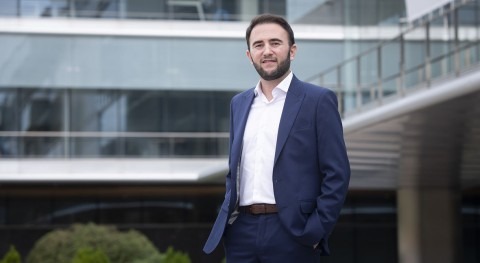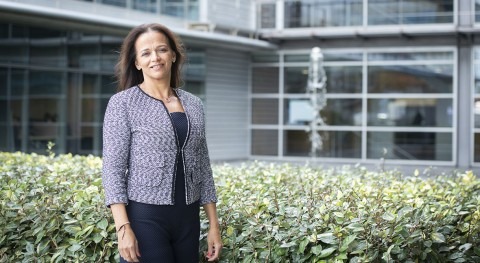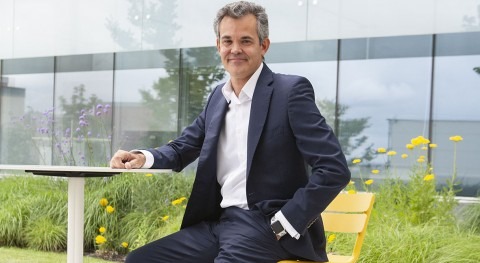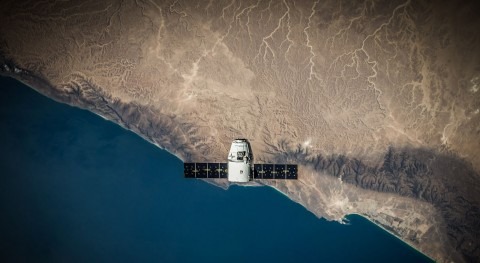This ongoing trend, also known as industry 4.0, is essential to guarantee the competitiveness of companies. At Minsait, a leading company in digital transformation, our goal is supporting our clients by providing solutions aimed at generating positive impacts on their business and on society.
A constant evolution is required to address the challenges faced by the industry, such as reducing production costs, speeding up responses to eventualities or improving customer experience.
Water utilities are not on the sidelines of this wave of change. Digitalization has led to the transformation of the water sector, becoming essential in most processes, both at the level of water infrastructure operation as well as commercial management and related corporate processes: financial, HR or marketing, among others.
.jpg)
The range of new tools includes several solutions, from the intelligent and automated management of the sensors deployed in the field, to the automation of processes through “Virtual Workforce”, a wave in the digital transformation that is revolutionizing back office and front office operations.
All these new solutions contribute to improve the main water management areas, in terms of equipment connectivity, data homogenization, and process automation.
Nowadays, the global panorama intensifies water utilities’ challenges. Climate change is a reality and so is the fight against water scarcity, worsened by incessant population growth and increasingly stringent environmental regulations. For all these reasons, the sector is necessarily forced to integrate disruptive technologies into management.
However, although major companies are taking leaps and bounds to catch up, the digital maturity level of water companies still has a long way to go.
Although companies are taking leaps and bounds to catch up, the digital maturity of water companies still has a long way to go
Based on our experience with utilities at the international level, where we carry out digital transformation projects, we identify three types of companies, based on their level of digitalization.
- Companies in a premature state of digital development, where their efforts in the IT field focus on implementing basic functionalities of an ERP system, covering basic processes of commercial management, having a GIS system, as well as supporting the operation through a SCADA system.
- Digitally conscious companies, which have redesigned most of the operations to have more automated and controlled processes. These companies are in a phase of consolidating their technology to be able to implement complementary functionalities. Digitally conscious companies usually implement more advanced modules of the systems, as well as solutions that enhance energy efficiency and the relationship with both internal and external customers through their virtual office and web portal. In addition, they develop pilot projects that allow them to validate the application of new operating models, validating and identifying the Business Case that deserves a future investment.
- At the highest level would be companies with digital maturity, which are those that have consolidated their technologies. These companies still have room for improvement through the incorporation of advanced analytics aimed at optimizing strategic decision making, where data is a common asset for all areas. Similarly, the automation of processes reduces human intervention in low-value tasks, guaranteeing continuity and quality of service and making operations more efficient. To do this, they resort to the capabilities of robots, automated end-to-end monitoring and virtual replication of real processes.
It is essential to migrate from obsolete technologies to modern ones and adapt the business processes and logics to digitalization in order to improve in financial and operational terms. Additionally, companies must align their IT strategy with OT, as both are completely linked.
In order to face the digital transformation and promote new customer-oriented business models, we have developed Onesait Utilities, a complete suite of solutions focused on responding to new challenges and opportunities for utilities in the new digital age. In search of operational efficiency, the integration of these solutions is essential to provide water companies a unified performance vision.
It is essential to migrate from obsolete technologies and adapt business processes and logics to digitalization in order to improve
Among the available solutions, the implementation of Onesait Utilities Customers allows the optimization of the commercial cycle, covering the different needs of the business areas and enabling a 360o view of all processes related to a specific customer.
It is also necessary for utilities to have the appropriate inputs, guaranteeing the reliability of the information obtained throughout the network. Access to real consumption, flow, pressure or water quality data allows the companies to take a step forward to implement flow control solutions.
In this field, Onesait Utilities Metering monitors assets and validates and certifies the measure. It also supports analysis and decision making by applying Artificial Intelligence (AI) through Machine Learning and integrating Big Data capabilities and functions such as forecasting demand. This is the way to drive progress towards a state of digital maturity.
Another factor of measurement accuracy in a water supply network relies on identifying physical leaks in the network. The more exact the procedures for the control of real and apparent leaks, the better we will characterize the volume of non-revenue water, which will favour the implementation of water efficiency plans with significantly more positive results.

To solve the problem of locating network leaks in real time and accurately, we have developed Onesait Utilities Sensing, an automatic system for the detection of leaks and threats in pipes in real time based on the use of DAS technology (Distributed Acoustic Sensor).
The system uses standard communication optical fibre, and monitors transport and distribution networks by transforming optical signals into alarms with an intuitive and functional user interface.
At Minsait we have a technological lab that uses simulation technologies on a 4-pressure bar hydraulic circuit. This way we can identify individual and simultaneous leaks in the network, as well as external threats, whether they are mechanical or manual disturbances.
It has been possible to identify leaks with a sensitivity of around 100 l / hour, as well as threats and their location in the pipeline with great precision, of approximately 5 meters. A single optical sensor equipment can monitor up to approximately 150 linear km.
To face the digital transformation and promote new customer-oriented business models, we have developed Onesait Utilities
The implementation of these and many other systems generates layers of complexity for operators and can even lengthen routine testing processes in control centres. That is why there is always a need for simplification and presentation of interfaces, in such a way that it is simple for new users and there are no barriers on the way to digitalization.
From the point of view of improving operational efficiency, we are applying hyper automation processes, where we combine multiple technologies such as Machine Learning (ML), RPA (Robotic Process Automation), and automation tools, and we help to apply them gradually in our clients. This process starts with the digitalization of content and processes, through the automation of repetitive tasks using robots and integrating support platforms that offer an analytical perspective, and finally evolving to the implementation of intelligent processes that simulate the human decision-making process. These technologies assist utilities in reducing costs, generating additional revenue, and minimizing risks.
In this way, with the application of all these new solutions, Minsait wants to be part of the revolution of the digitalization of the water sector, applying new disruptive technologies that will allow society to extract more information and build a responsible, competitive water infrastructure with a vision towards the future.












